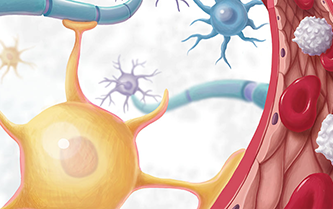Understanding the Human Brain: Updates From the Friedman Brain Institute
The Friedman Brain Institute at the Icahn School of Medicine at Mount Sinai is one of the world’s premier institutions dedicated to advancing our understanding of brain and nervous system disorders and driving innovative approaches to new treatments and diagnostic tests through translational research.
This fall, three researchers update the FBI donor community on why they’re passionate about understanding the human experience through the brain, and the work of their laboratories in bringing new insights to the treatment of depression, substance abuse disorder, PTSD, aging, and more.
Dr. Saez on How the Brain Generates Thoughts, Feelings, and Actions
 Ignacio Saez, PhD, is the Director, Human Neurophysiology Laboratory, The Friedman Brain Institute and Associate Professor, Neuroscience, Neurosurgery, and Neurology at the Icahn School of Medicine at Mount Sinai
Ignacio Saez, PhD, is the Director, Human Neurophysiology Laboratory, The Friedman Brain Institute and Associate Professor, Neuroscience, Neurosurgery, and Neurology at the Icahn School of Medicine at Mount Sinai
My lab’s fundamental goal is to understand how the brain generates thoughts, feelings, and actions. We are also interested in what happens when those go wrong in neurological and psychiatric disorders – doing this will help us develop new treatments for disorders that are in need of them. Right now we have two main therapeutical avenues available to treat brain disorders. One is behavioral such as counseling and cognitive behavioral therapy, and the second, which most frequently comes to mind, is pharmacological: we take pills that flood the brain with chemical compounds that modulate brain activity through their actions on neurons and synapses. These are valuable but sometimes fall short – we are still not able to cure many brain disorders, so new treatments are necessary.
In my lab, we are interested in developing new therapeutical methods using a third, complementary approach: neuromodulation. This is the modification of brain activity in very specific brain areas and at precise time points, building on knowledge that pinpoints individual brain regions as being affected in different pathologies. Think about the brain as the world’s most powerful computer – we can do certain things by affecting it globally – we can turn it on or off, etc. but would be most useful would be the ability to affect individual circuits that carry specific functions – memory, graphics, speed. The same is true of the brain – we want to modulate brain regions underlying specific functions, specifically those that are affected by specific disorders, without affecting others.
To be able to do this, we need to be able to measure brain activity as precisely and accurately as possible. My lab does this by using a very unique approach: we leverage clinical in which surgeons put electrodes directly inside the patient’s brains to diagnose or treat existing neurological or psychiatric disorders. This overcomes many of the typical limitations associated with measuring human brain activity, and gives us a principled, ethical way of collecting extremely high quality data from hundreds of locations in the human brain thousands of times per second, but also the ability to modulate the activity in each one of those sites independently through neuromodulation – namely electrical stimulation. It’s a very powerful window into human brain.
We believe that using this approach to directly study the human brain we will be able to derive fundamental new insights and develop new therapeutical approaches for treatment such as depression, substance abuse disorder, bipolar disorder, anxiety and many others.
Dr. Rudebeck on Understanding Patterns That Control Moods
 Peter Rudebeck, PhD, is the Co-Director, Lipschultz Center for Cognitive Neuroscience and Associate Professor, Neuroscience and Psychiatry at the Icahn School of Medicine at Mount Sinai
Peter Rudebeck, PhD, is the Co-Director, Lipschultz Center for Cognitive Neuroscience and Associate Professor, Neuroscience and Psychiatry at the Icahn School of Medicine at Mount Sinai
Moods color the way that we experience the world. A good mood can make the worst things seem manageable, whereas a bad mood can make even the most pleasurable things seem drab. Our mood can also change quickly over the course of minutes or can stay the same hours, days, or weeks. In the case of depression or in dementia, moods can become stuck in negative state more permanently. Despite moods being central to human experience, the patterns of activity in the brain that control moods are not well understood. We’re researching both how moods fluctuate naturally, and how moods can become pathological.
The prefrontal cortex – the part of your brain at the front of your head above your eyes – is fundamentally involved in controlling moods. My work is focused on two areas that represent headway on developing better treatments for mood disorders and alterations in mood in dementia.
The first is trying to characterize the patterns of activity in prefrontal cortex during both positive and negative moods. To do this we teach macaque monkeys to play video games for juice rewards and monitor the activity of thousands of neurons in frontal cortex of macaque monkeys as they transition across mood states from winning or losing.
For the second approach, we know that a type of neuromodulation called deep brain stimulation targeted to a part of the prefrontal cortex can be effective at treating the most extreme forms of depression that are resistant to all standard treatments. Despite this treatment working for depression, we don’t really know how it works. If we knew that, we should be able to figure out how to better treat depression as well as how mood can be unstuck. What we’ve found is that delivering stimulation to prefrontal cortex not only causes changes in electrical activity, but it actually rewires the brain in really specific ways. We’re still exploring exactly how the rewiring happens but what is really exciting about this work is that changing the brain’s wiring may be an important way to aid the recovery from depressed mood, especially in people with the most extreme forms of depression.
Dr. Cai on How Memories Are Stored
 Denise Cai, PhD, is the Co-Director, Center for Computational and Systems Neuroscience and Associate Professor, Neuroscience at the Icahn School of Medicine at Mount Sinai
Denise Cai, PhD, is the Co-Director, Center for Computational and Systems Neuroscience and Associate Professor, Neuroscience at the Icahn School of Medicine at Mount Sinai
One of the most amazing things about the brain is that it can store what seems like an infinite number of memories across the lifetime in this finite brain space. And I would argue that the accumulation of memories across a lifetime is what defines the human experience. So the question that keeps me up at night and drives my research program is how our brains are able to stably store and flexibly update our memories across a lifetime. My lab now looks to understand the neural mechanisms, or the basic building blocks, of how memories are stored in the brain. We do this in two main ways. The first is through observation and the second is through manipulation.
To “see” how the brain forms memories, my colleagues and I have developed a tiny miniature microscope that is the size of the tip of my thumb. This tiny microscope, we call Miniscope, can peer into a brain and see hundreds to thousands of cells. We can see how these cells work together to form memories, how these cells that contain memories are replayed during sleep and how these cells are active again when memories are recalled. By tracking this large population of cells and learning about their pattern of activity, we can predict how stable these memories are. We can tell when a brain is thinking of one memory from another different memory. This relates importantly to the field of age-related cognitive decline.
We know that as we get older, our memory system gets worse. Because we can use these Miniscopes to record the cells over time, we can see how the brain learns well when younger and how it changes when it ages. We can also use machine learning and take the neural activity patterns and predict which brains will have poor memory with age. The power to measure neural activity now and predict how the brain will decline or maintain its cognitive capacity when we are old is important to develop new treatments for age-related cognitive decline.
In addition to “seeing” the memory cells in the brain, we can also artificially activate or silence those specific memory cells. For example, we saw that there was less activity of cells with aging and that led to memory impairments. So we used a method to increase activity in those cells and rescued memory impairments.
In addition to studying aging, we are using this tool is to understand how the brain processes trauma and stress. We can see which cells are active when there is a traumatic event. We have special tools where we can later shine light into the brain and selectively silence those trauma memory cells. So one big question we are asking is if we silence the trauma memory cells, can we “erase” the trauma memory? This is particularly important for developing treatments for stress and anxiety related disorders, such as post-traumatic stress disorder or PTSD. If we can selectively erase the trauma memory, or at least weaken that memory so it’s not so visceral and stressful, can we decrease PTSD symptoms?
Using these tools to understand the causal relationships between the brain and behavior is critical in developing more targeted treatments for many neurological and psychiatric disorders. As well as just understand how our brain works normally.
Since establishing The Friedman Brain Institute 16 years ago, Mount Sinai has built an enviable record of success in the neurosciences. Thanks to the generosity of Mount Sinai Boards of Trustees Co-Chairman Richard A. Friedman and his wife Susan, the FBI is one of the world’s preeminent institutions dedicated to advancing our understanding of the brain, spinal cord, and nervous system, and treating neurological and psychiatric disorders. With researchers on the leading edge of a multitude of specialties in the neurosciences, and donors energized to fund high-impact science with translational clinical applications, the FBI is poised to drive advancements in patient care for decades to come.
